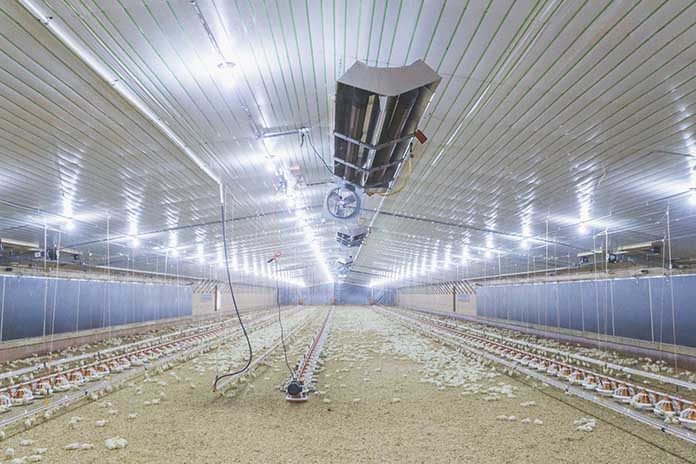
Eimeria infection is one of the most important diseases affecting poultry production, and is characterized by bloody or watery diarrhea, weight loss, poor feed conversion and moderate to high mortality. Heat stress is among the major environmental stressors in poultry, predisposing broiler chickens to immunosuppression and rendering them susceptible to diseases. There are some suggestions that Heat stress reduces Eimeria oocyst output in chickens, however, the relationship between Heat stress and coccidiosis is not elucidated.
The objective of this study was to investigate the effect of Heat stress on the development of E. tenella. Fifty-four 21 day old Cobb500 broiler chickens were infected via gavage with 15×104 E. tenella sporulated oocysts suspended in water and raised in either a thermoneutral (control: 25 °C) or a heat-stressed (treatment: 35 °C) environment. At 6 days post infection (dpi), 9 birds in each group were euthanized humanely, and the caecal lesion scores, merozoite and oocyst counts were evaluated.
The rectal temperatures were also taken. Data were analyzed using Mann-Whitney test at the significance level of 5%. Heat stress was confirmed in the group exposed to 35 °C by visual evaluation of the chickens, including panting, opened wings. The Heat stress group had significantly higher cloacal temperature (43.03 ± 0.45 C versus 40.72 ± 0.40; P<0.001) as compared to the control group. At 6 dpi, merozoites, caeca lesion scores and oocyst counts were evaluated in both groups. The Heat stress chickens had lower caeca lesion scores (0.33 ± 0.16 versus 1.89 ± 0.45; P=0.014), merozoite (26.67 ± 24.26 versus 823.21± 262.31; P=0.0002) and oocyst counts (80.40 ± 24.36 versus 1802 ± 266.34; P=0.008) as compared to control chickens.
Overall our results indicate an interruption of the cycle of E. tenella in chickens housed under heat stress conditions.
From the Proceedings of the 2019 International Poultry Scientific Forum

















